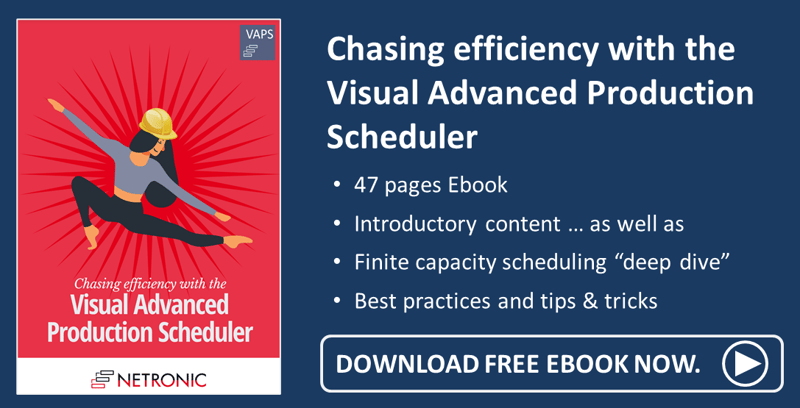Two weeks ago, Martin hosted a webinar about "How to win the battle between production planning and scheduling". With this blog, I'd like to give a summary of the webinar for all who weren't able to attend or would like to recap the contents again in written form.
I also include the recording of the webinar and provide links to the respective minute of the presentation.
The differences and similarities between planning and scheduling [min 3:20]
After some preliminary words, Martin directly dived into the topic by stating - the somewhat provocative - thesis that there not only is a gap between planning and scheduling but that sometimes these two even battle each other. At first glance, the differences don't seem to be that great because, after all, they both aim at balancing demand and supply.
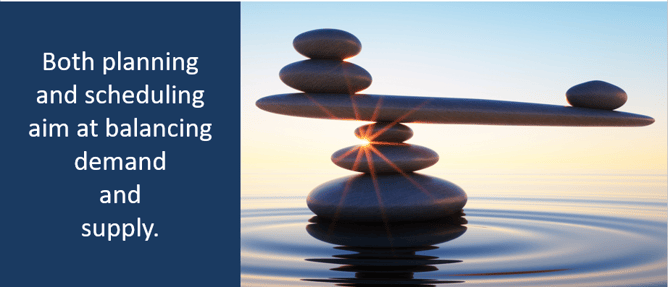
But, as Martin went on, a closer look will reveal 4 fundamental differences and if these differences will not be taken into account, this will lead to situations where things might get confused and painful. These cases were explained in detail and at the same time, Martin gave explicit recommendations or, as he called it, recipes, for identifying and avoiding these situations or how to make planning and scheduling work hand in hand and not against each other.
As Business Central is a strong tool when it comes to the "planning part" of production, it has its shortcomings in the "scheduling part" and so the webinar also showed how our tools for visual scheduling in Business Central, the Visual Production Scheduler (VPS) (the drag & drop frontend to standard Business Central manufacturing) and the Visual Advanced Production Scheduler (VAPS) (the first finite capacity scheduler fully integrated into Business Central) can help close this gap.
#1 The purpose: rough planning vs fine planning [min 6:06]
Planning and scheduling follow different purposes in that planning focuses on what to make and roughly when to make it, whereas scheduling defines the exact when and by whom to make it. (Here is another blog in which you can read more about the difference between planning and scheduling.)
Hence, having different purposes, planning and scheduling are different tasks. It is not the same to plan and to schedule. As a matter of fact, planning generates the input data for scheduling.
Having recognized and accepted this fact, the consequence will be, of course, to use the right tool for the right task and not apply the "one fits all approach".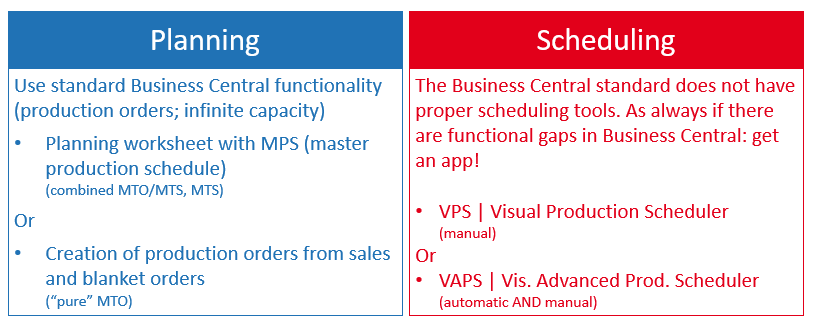
#2 Buckets of time vs concrete timing [min 13:47]
Martin illustrated this differentiator between planning and scheduling by the everyday example of a planner who, while checking demand and supply for the coming week on Monday morning, maybe recognizes a lack of supply and consequently creates production orders for replenishing this missing supply. The time span the planner concentrates on is just roughly sometime during the upcoming week, not a concrete day and/or time.
Then the scheduling person (who can be the same person as the planner) takes over and uses the newly created production orders as input data for the scheduling. His or her task now is to create an actionable plan by deciding which item is to be produced on which machine by whom and when while taking into account possible staff absences or maintenance downtimes of machines.
The point where planning and scheduling are likely to start battling a bit is when changes occur to the original production orders, like more demand for a specific item, so that the planning person deletes or changes the original production order, thus "destroying" the nice actionable schedule of the scheduler and bumping demand into buckets of time.
So, Martin's recommendation here is don't mix buckets of time and concrete timings: define a time frame for which you want to be concrete and one where you are ok with things being a bit less concrete.
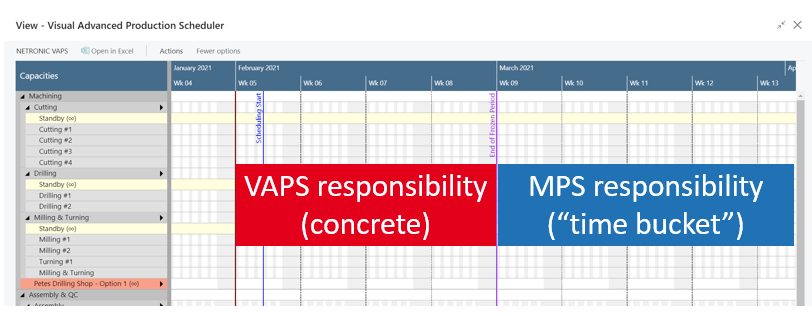
#3 Infinity capacity vs concrete constraints such as finite capacity [min 22:47]
Martin pointed out that whereas planning is based on the assumption of infinite capacity (shown in the example above by the planning person just dumping another production order, increasing the demand for another one, or adding new items etc.), the scheduling person has to take into account concrete constraints, such as finite capacity.
All scheduling constraints are parameters that you must handle right and the more constraints you have, the more complex the scheduling challenge becomes and the more likely it is that at some point you will have to apply an automated scheduling tool that helps you take all these constraints into account in one go.
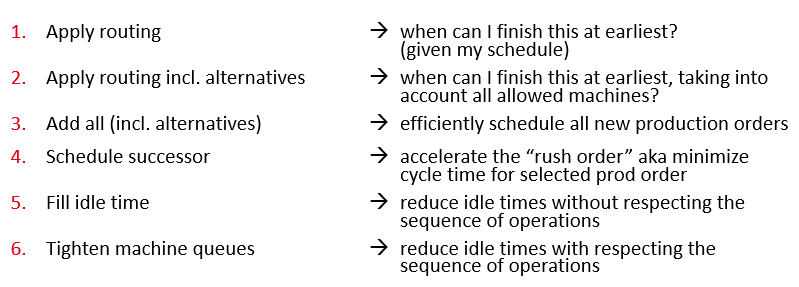
#4 Rough-cut plan vs actionable schedule [min 29]
As Martin stated, scheduling always means dealing with the future which - as we all know - nobody can predict. Hence it is normal and acceptable that your schedule will change. This means that when making a plan, you make an assumption about the future and as soon as reality kicks in, you will need to make corrections. But of course, you also need to get where you planned to go eventually, but most likely it will not be on the direct way, as the below picture very vividly shows:
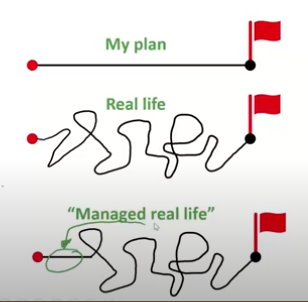
So the recommendation here is: decide for a stability area in your schedule (indicated by the "Managed real life" in the picture above), e.g. determine that there will be no changes to the schedule for tomorrow, whereas from the day after tomorrow changes will be completely ok. This way, you will have a short period of time that you keep stable which will comprehensively increase your efficiency.
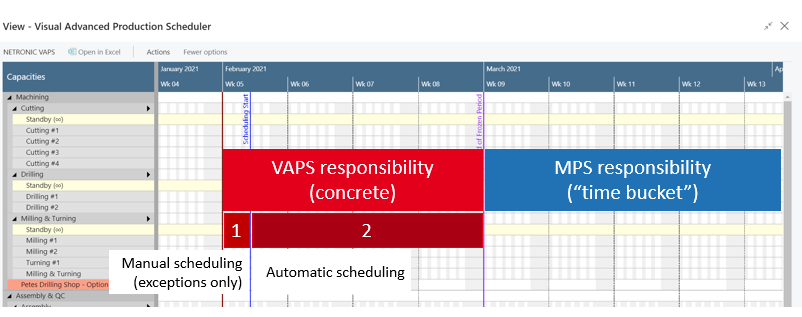
Live demo [min 45:19]
In the live demo, all the above recipes were put into action in the VAPS and vividly showed how to make planning and scheduling work hand in hand instead of having them battle each other.
Further information
- Watch the recording of this webinar
- Book a free demo with a VAPS or a VPS specialist.
- Get your free copy of our comprehensive eBook:
